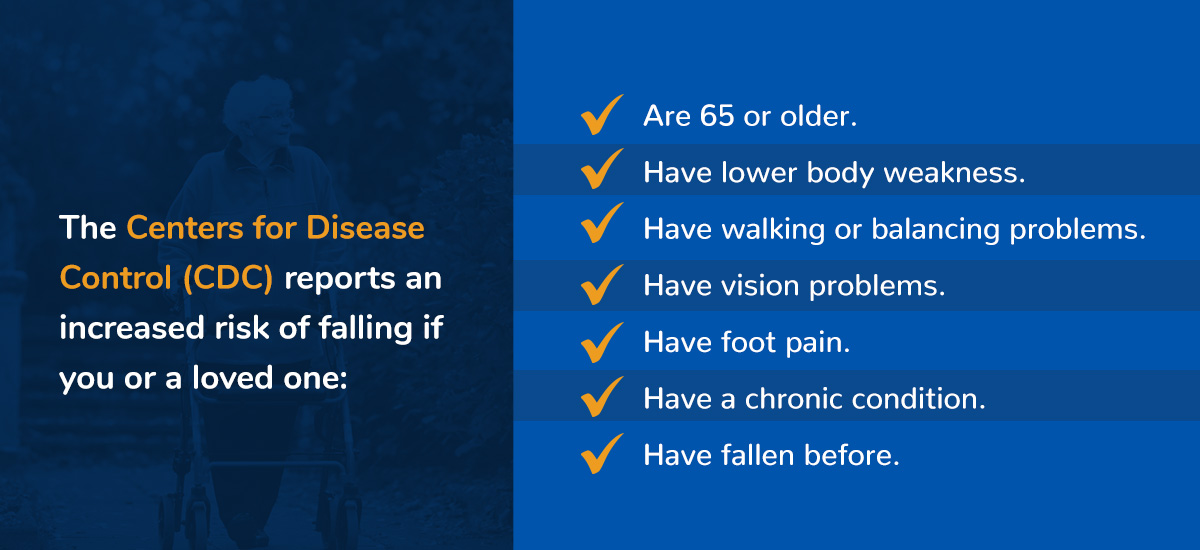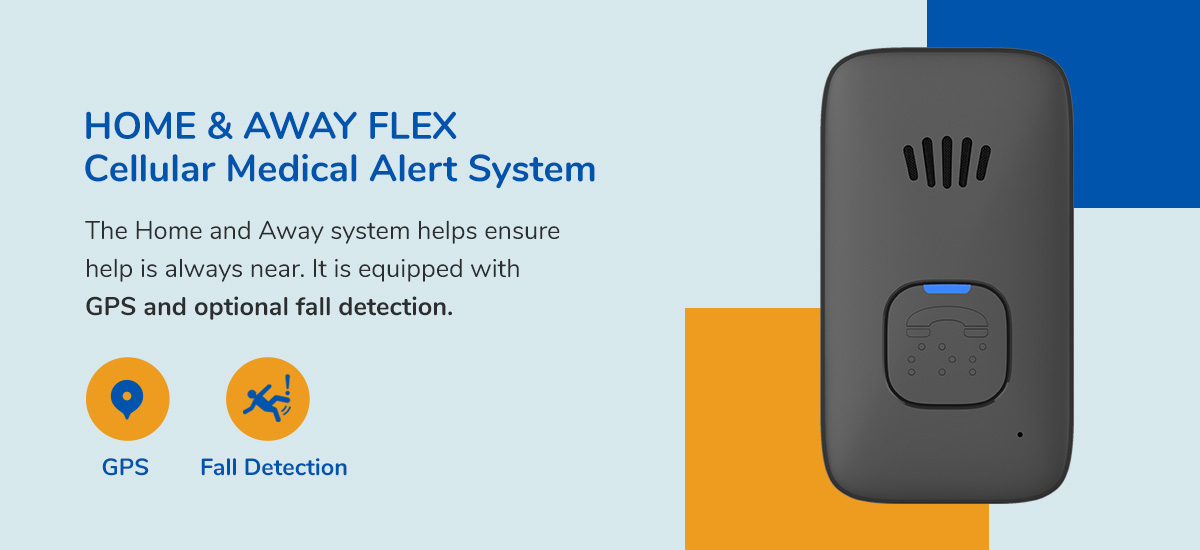What is Fall Detection and How Does It Work?
Nov 1st 2024
What is Fall Detection and How Does It Work?
Emergencies can often catch us off guard. Fortunately, many medical alert systems have fall detection, so you're ready for anything. These devices use sensors to monitor movement and send alerts if you or a family member falls. This extra security is critical given that 37 million older adults fall in the U.S. every year.
Adding fall detection to your personal emergency response system (PERS) can give you and your family peace of mind. Read on to learn how fall detection works, the types of devices available and the benefits of using this service.
- What Are Fall Detection Devices?
- How Do Fall Detection Devices Work?
- Types of Fall Detection Devices
- Benefits of Fall Detection Devices
- Who Should Wear a Fall Detection Device?
- What to Keep In Mind When Choosing a Fall Detection Device
- Our Medical Alert Devices With Fall Detection
What Are Fall Detection Devices?
Fall detection is a technology added to medical alert devices that notifies our 24/7 emergency response center, 911 or a loved one when a fall occurs. While often referred to as “fall detection devices,” they usually come with other features. You can add a fall detection system to a wearable medical alert device like a watch or necklace. That way, Mom or Dad can receive help without pressing the call button.
How Do Fall Detection Devices Work?
Fall detection utilizes sensors that activate during a sudden drop — commonly a fall. These devices use three elements that work together for better security:
Precision Sensors
Fall detection systems use sensors to monitor movements. These sensors detect rapid changes in movement, looking at angle, speed and distance to determine if the person has fallen.
Fall Detection
Fall detection devices use an algorithm and sensors to detect abrupt body movements. They assess body position, physical activity and smoothness. If the technology finds these variables near a danger zone, it will trigger the fall detection alert.
Emergency Response
The fall detection feature will call our emergency response center within seconds of a fall. Highly trained agents will reach out to assess you or your loved one's situation. Even if you do not speak with the agent, they will call emergency services and send them to your location.
Types of Fall Detection Devices
The basic fall detection device types are wearable and nonwearable. The best device will depend on where you spend most of your time.
- Wearable medical devices:These devices can be worn around the neck or wrist or clipped onto a belt. They're a great option if you spend most of your time outdoors, as they work with mobile networks. Basically, they operate anywhere you have cellular coverage. Most wearable devices also let you manually contact our emergency response center.
- Nonwearable or “in-home” medical devices: Wall-mounted devices and free-standing buttons are great for those who mostly stay at home. However, they may be out of reach during a fall or when traveling. You can place them in the home where you spend most of your time. Some nonwearable devices pair with corresponding wearable devices, so you have a few options when calling for help.
Benefits of Fall Detection Devices
Fall detection systems can provide you and your family safety and peace of mind. They offer several benefits:
- Speeds up help to lower the complications that can occur from a fall
- Built into water-resistant devices for use in the shower
- You can add the technology to a current medical alert system for convenience
- You can use and carry the device anywhere in the U.S.
- Offer an extensive range to detect falls
Who Should Wear a Fall Detection Device?
Falls can occur anywhere, any place. While you can reduce the risk of falling, accidents still happen, and it's best to be prepared. The Centers for Disease Control (CDC) reports an increased risk of falling if you or a loved one:

- Are 65 or older.
- Have lower body weakness.
- Have walking or balancing problems.
- Have vision problems.
- Have foot pain.
- Have a chronic condition.
- Have fallen before.
A fall detection device can also be helpful if you use medications that increase your risk of falling. These can include sedatives or antidepressants.
What to Keep In Mind When Choosing a Fall Detection Device
Consider the following factors when looking for a fall-detection device:
- Range: If your device will be used in your home, ensure that it has a far enough range to detect a fall if you go outside.
- Waterproof: Many falls occur in the shower or bath. Make sure the device is waterproof or water-resistant for extra security.
- Two-way communication: Ensure the device has two-way communication. That way, the person who contacts you will know if you need help or if it is a false alarm.
- Battery life: You'll want a device with a good battery so you can use it on the go if you cannot charge it immediately.
- Subscription costs: Note that most devices have a fall detection subscription fee.
- Test and trial period: Choose a device with a trial period so you can try it before committing.
Fall Detection FAQs
The following are answers to common questions we receive about fall detection devices:
1. How Accurate Are Fall Detectors?
Fall detection devices are generally accurate at detecting falls. Still, they can have trouble detecting slow or low falls, slumps or crumples. Note that no fall detection system works perfectly 100% of the time. It's best to press the call button during a fall, whether the device is automatic or not.
2. What Triggers Fall Detection?
Our fall detection devices trigger an alert only if they detect that you have moved suddenly. They use an algorithm that analyzes sensor data. It knows if the wearer has fallen or is just walking or sitting.
3. Does Fall Detection Automatically Call 911?
All calls are routed to our emergency response center. Unlike 911, we know who and where you are and have your emergency notification list of family and friends to contact.
4. Does Fall Detection Use Cellular?
Medical Care Alert's cellular service is built into the device. This allows you to make an emergency call wherever you are. In-home systems may use cellular networks but can also use the landline.
Our Medical Alert Devices With Fall Detection
Medical Care Alert offers several devices with automatic fall detection:
- HOME & AWAY FLEX Cellular Medical Alert System: The Home and Away system helps ensure help is always near. It is equipped with GPS and optional fall detection. Mom or Dad can speak into the water-resistant GPS pendant in times of need. Assistance will be sent to their location.
- Smart Watch for Seniors: Our Smart Watch prioritizes safety and well-being. It monitors location, heart rate and steps. In an emergency, simply press the button and speak into the watch for help.
- HOME System: The HOME System provides comprehensive coverage of your living space and its surroundings. With shower-safe buttons and an impressive range of up to 1,000 feet, your loved one can feel secure wherever they are at home. It also offers an optional AutoFALL pendant for added security. When you opt for the cellular version, you don't need a personal cell phoneto receive help.

Contact Medical Care Alert About Our Fall Detection Systems
Falls can be scary. Adding fall detection to your medical alert system can give your family peace of mind. That's where Medical Care Alert comes in. Our fall detection systems prioritize your safety and ease of use. After all, "Care" is our middle name and is at the heart of everything we do.
To learn more about which device is best for you, contact us today!

